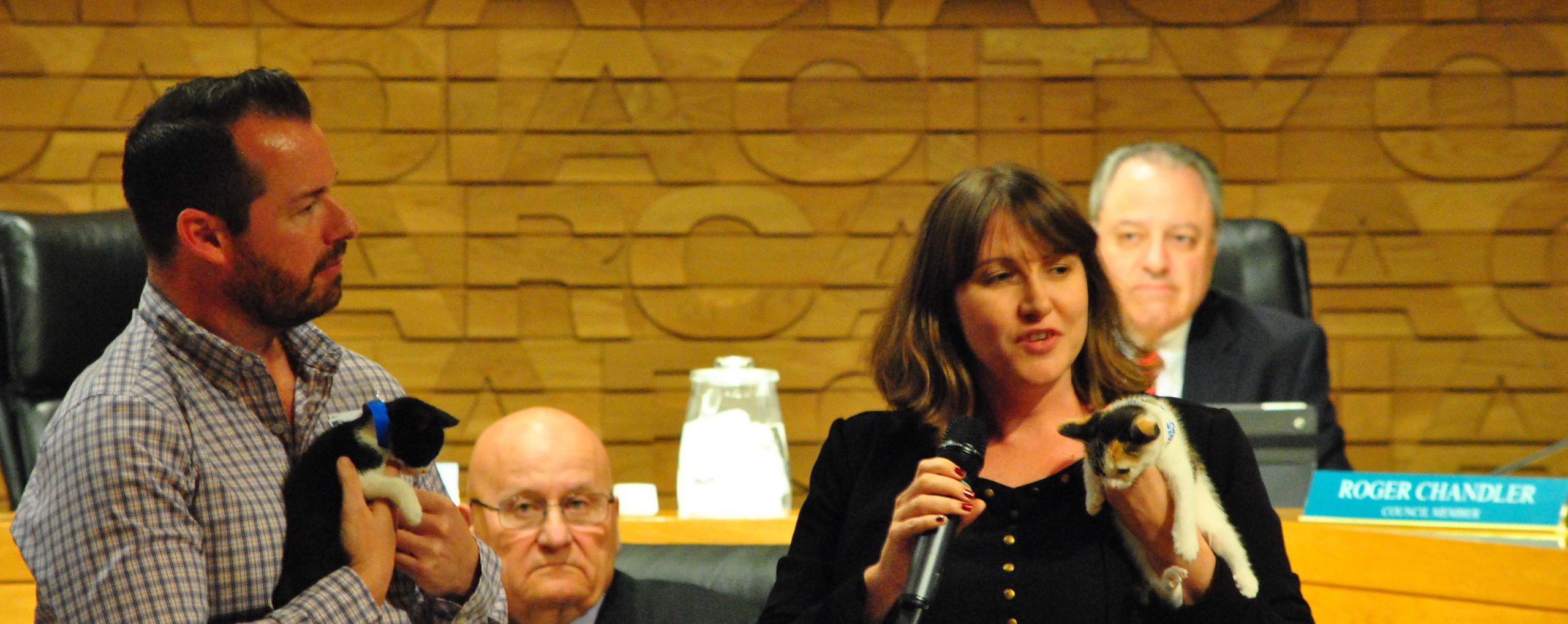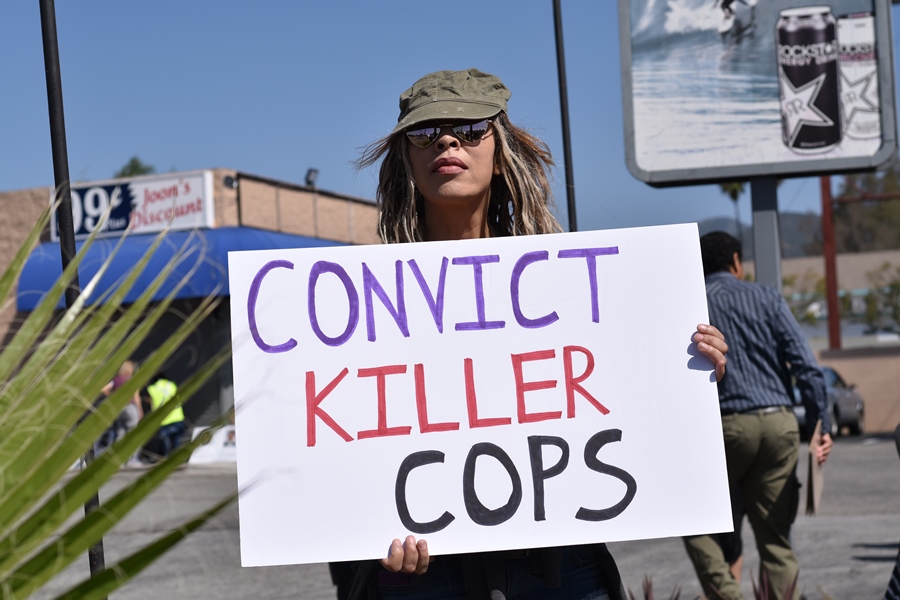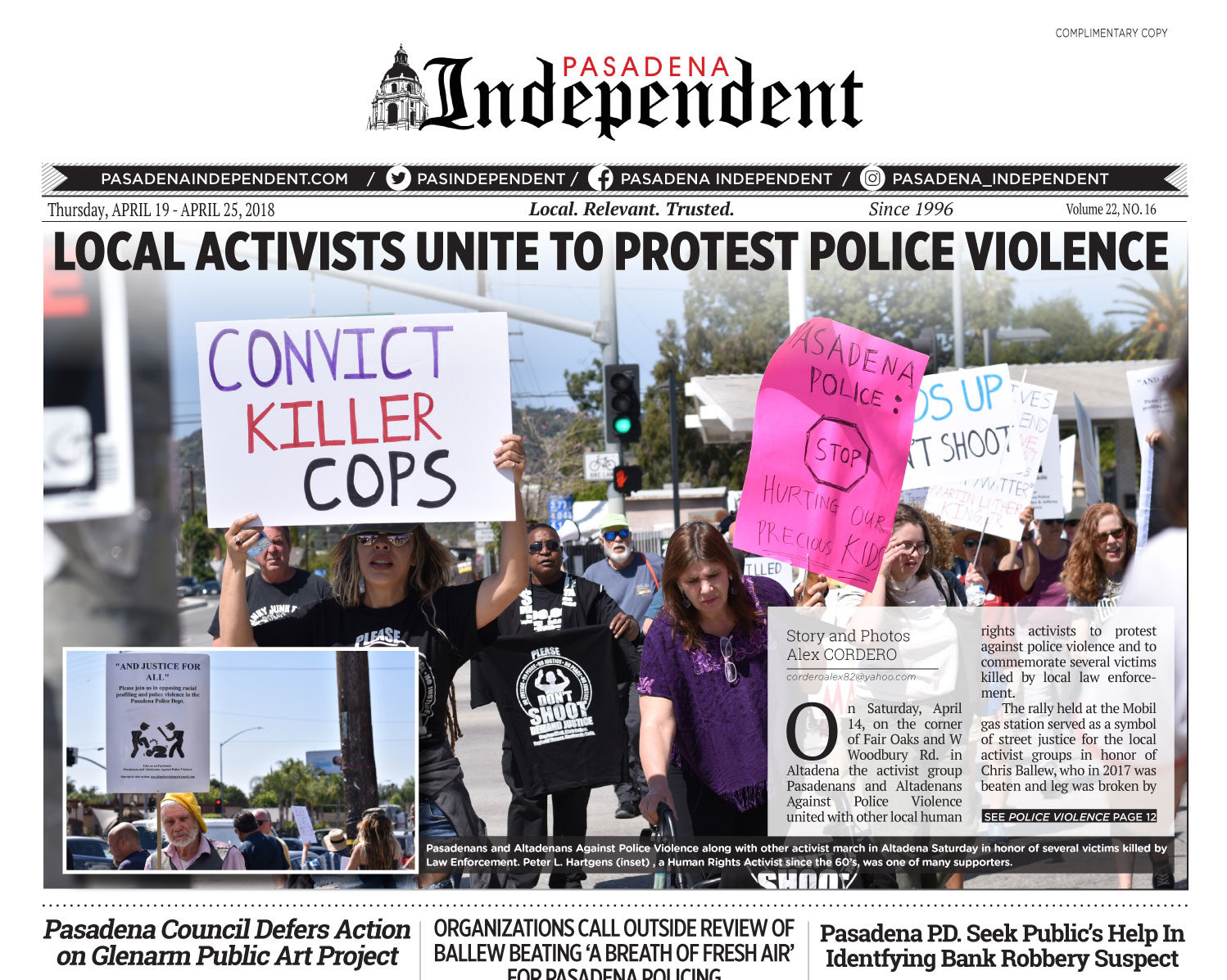
Policymakers struggle with ‘optics’ of approving a near-million-dollar art project in the face of a looming structural deficit
By Gus Herrera
For the second time in three weeks, the city’s latest proposed public art installation came to a halt before the city council.
The Glenarm Capital Public Art Project, a proposed 44-foot by 76-foot sculpture, which was to be located on the front façade of the power plant’s northernmost cooling tower (facing the 110 Freeway), was tabled without opposition at council’s latest regular meeting.
The project first came before the council on March 26, but various concerns, particularly regarding vehicular safety, prevented the $850,000 installation from receiving the green light – instead, council directed staff to return with additional information.
Located near the terminus of the 110 Freeway (i.e. the Arroyo Parkway/Glenarm Street intersection), some council members feared that the ambitious LED-lit installation might distract drivers.
“Are people going to be looking over at our art, as they should be braking?” asked Council Member Steve Madison on March 26.
Caltrans traffic volume data from 2016 estimates that 43,500 vehicles travel on that segment of freeway daily, resulting in “an estimated 13.8 million vehicles per year,” according to the department of transportation. Add in the Metro Gold Line, nearby crossing students from Blair and ArtCenter’s south campus, and the intersection is truly one of the city’s busiest sectors.
Furthermore, activity in that area is expected to increase as ArtCenter’s master plan unfolds – a plan which reportedly will include a massive electronic billboard on the corner of Arroyo Parkway and Glenarm.
The second time around, staff returned with additional information, including a report from Fred Dock, director of transportation, in which he revealed that because the proposed project contained no “red, blinking, or intermittent light,” the installation “appears to abide by the [Caltrans] requirements … and, as such, would be acceptable for installation adjacent to a state highway.”
Additionally, staff’s report states that the proposal is still “conceptual” and that the artist, Alice Aycock, “intends to finalize the lighting plan in collaboration with stakeholders to ensure no light pollution.” The contract would also “reiterate the requirement that lighting be a component of, but not a major feature of the artwork.”
“This project is not a lighting project,” said Rochelle Branch, cultural affairs manager, “it’s a sculpture with a small component of LED [lighting].”
But, this time, council’s concerns focused less on the “distraction factor” and more so on the “optics” of approving a near-million-dollar project as the city faces looming fiscal challenges.

“All the reasons to reject this project are very valid, but one of the things I think about is not so much … the gateway issue or the distraction issue, it’s the timing,” said Council Member Gene Masuda, “our city manager has been talking about a structural deficit that we’re going to go through … that’s where I’m having a difficult time. It’s the optics that are being asked of us … I know it’s a beautiful project … but I’m concerned about the structural deficit that we’re going to be having … next year.”
On the other side of the coin, Council Member Margaret McAustin argued that council should respect the city’s public art process, “I think the process was sound, I think it was thorough … [we’re] obligated to honor the process that it went through. Whether we like the art, the artists, that’s beside the point … I support this project.”
The project, which went through an extensive process including approval by a selection panel and the city’s arts and culture commission, was fully funded from the capital public art fund – a program where one percent of funds from qualified projects go to support Pasadena’s future public art.
But, despite the validity of the process, Council Member Tyron Hampton still disagreed, “I do respect the process, but sometimes the process doesn’t get it right,” he said, “there is no public benefit … regular, everyday citizens cannot even see this.”

In the end, Mayor Terry Tornek suggested tabling the item until the city engages in capital improvement project budget talks in the near future, at which point council can study the possibility of using the capital public art funds in alternative ways.
Although the mayor agreed that the process should indeed be respected, he also reminded council that they have the ultimate responsibility as elected officials, “we need to support the process, but we’re not captives of the process … if we’re going to spend 800 grand or thereabouts … on a public arts endeavor, we better be enthusiastic about it.”
The mayor’s motion was approved without opposition.






